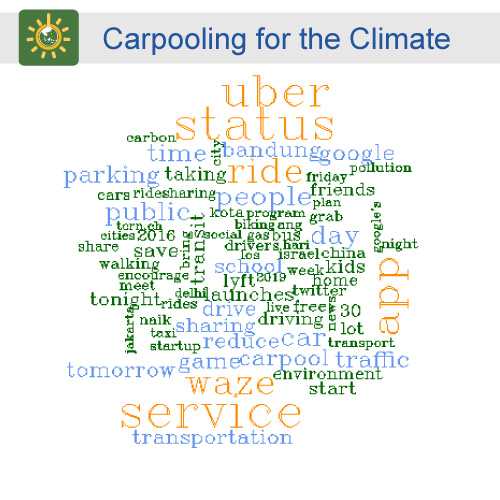[vc_row css=”.vc_custom_1565542682041{margin-right: 0px !important;margin-left: 0px !important;}”][vc_column css=”.vc_custom_1565542696462{padding-right: 0px !important;padding-left: 0px !important;}”][vc_single_image image=”4503″ img_size=”1440X300″ el_class=”banner-event”][/vc_column][/vc_row][vc_row css=”.vc_custom_1565542751414{margin-right: 0px !important;margin-left: 0px !important;}”][vc_column width=”1/4″][/vc_column][vc_column width=”1/2″ css=”.vc_custom_1565622195563{padding-bottom: 50px !important;}”][vc_column_text el_class=”title-event”][post_title][/vc_column_text][vc_column_text el_class=”author-pers”]By Rika Safrina[/vc_column_text][vc_column_text el_class=”date-venue-news”][post_date][/vc_column_text][vc_column_text el_class=”text-par-news”]Another year has just begun, and only a decade left for all countries to achieve Sustainable Development Goals, including climate action. The International Panel on Climate Change (IPCC) has reported that limiting warming to 1.5 C will require about 45% reduction of greenhouse gas (GHG) emissions from 2010 levels by 2030. However, the NDC Global Outlook Report 2019 from UNDP suggested that we must act more in areas related to climate mitigation quickly to achieve that ambition (UNDP, 2019).
IPCC presented that transport is responsible for around 23% of global energy consumption. Behavioral changes in this sector will have a high impact on reducing personal emissions substantially (Wynes and Nicholas, 2017). This includes switching to an electric vehicle or even living car-free. Reducing the reliance on a private car for commuting can be substituted with walking, riding a bicycle or taking public transports. Such action will not just preserve the sustainable earth, one can also achieve their health resolutions throughout the year.
For their citizens to give up their car, first the governments should provide reliable public transportation and infrastructure which requires long term development. But such movement needs better swift and immediate initiative. Researchers from Norwegian Institute of International Affairs and the University of Sussex wrote in their recent study about climate change in social science, it narrates the most urgent question: how to change society to mitigate climate change right now (Overland and Sovacool, 2020). In the case of Southeast Asia, all 10 ASEAN Member States (AMS) have pledged their commitment to combating climate change through their Nationally Determined Contributions (NDC). However, this initiative should be exercised in all segments of society by encouraging each individual to swiftly change in their daily habits right now.
In alignment with climate change mitigation, the urbanization trend in many big cities has to be better strategized in facing the rapid growth of cars. Carpooling is something to be believed as a promising antidote. Carpooling is often viewed as a trend of sharing a single privately owned vehicle with several people on the same journey. Such practice helps to increase energy efficiency, reduce pollution levels and even the number of vehicles on the road. A number of studies have found that carpooling can reduce carbon dioxide emissions. For example, researchers from UC Berkeley reported that individual carpooler may reduce GHG emissions by approximately 4% to 5% (Shaheen et al., 2018). Another research’s finding also stated that employees carpooling both on the way to work and home can potentially decrease 22%-28% CO2 emissions (Bruck et al., 2017).
Globally, this grassroots movement was first popular in the US in the 1970s during the oil crisis, where workers tried to find alternative transportation for replacing their daily commute with private cars. Such a trend, which often pioneered the ride-sharing market usually exists in an urban area. The use of this transportation mode began decreasing since the fuel price reduction in the 1990s and the improvement of public transportation infrastructure in developed countries. Moreover, some concerns, such as the rigid route and schedule, and security issues cause society reluctant to widely adopt the carpooling method. However, with the rapid enhancement of technology, many startups recently emerged to hinder such barriers.
To understand more about carpooling phenomena in social perspectives, the social networking site can be explored because it presents real-life context. Twitter, as one of the world’s most popular social media platforms, provides a microblogging service for the users to express their opinion. Having almost 400 million active users every month and 500 million posts each day (or often called tweets), Twitter is considered a suitable channel to learn interesting facts about carpooling trend in the world.
The first step was to collect tweets data in the last 5 years using the keyword “carpooling”. It then gave results of 2459 tweets to be examined. After cleaning and removing several stopwords and unnecessary words such as “THE”, “LA” (it means “the” in Spanish), “DARI” (it means “from” in Indonesian/Malay language), the word cloud was plotted as seen above. The words with bigger size representing the ones mostly mentioned in the Tweets. Further analysis can be done by collecting more tweets with additional related keywords and phrases.

From the result of this quick exercise, we can find countries name CHINA and ISRAEL, also some Asian cities to name a few: BANDUNG, JAKARTA, and DELHI, where the car-sharing was probably the most strikingly spotted and discussed. It is interesting to find word BANDUNG, one of the cities in Indonesia, being mentioned more than JAKARTA, the capital of Indonesia. After randomly chose some samples of tweets talking about CARPOOLING and BANDUNG from the dataset, it was discovered that a lot of media reported about the recent carpooling pilot in 2019 implemented by the Bandung city local government to ease the traffic jams.
In terms of possible motives, ENVIRONMENT might be the most positive reason and seen as the benefits of lift-sharing, as depicted in the tag word such as REDUCE, CARBON, and POLLUTION, other than to SAVE trip cost. This interesting finding illustrates that the public is already aware that vehicle-sharing can help to decrease anthropogenic emissions, thus contributing to combating climate problems.
Moreover, some tech companies’ name emerged: UBER, WAZE, GOOGLE, LYFT, and GRAB. Although their main business is mobile ride-hailing, Uber and Grab also offer peer-to-peer ride-sharing service called UberPool and GrabShare/GrabHitch. Together with Lyft, they are leading the world’s market in providing a bridge between the transit demand (passengers) and transport planner (drivers), while Waze and Google providing the maps service.
Other than those giant companies, several local startups in Southeast Asia are developing ride-sharing apps such as Nebengers from Indonesia and Ryde from Singapore. In the greater Jakarta particularly, there is also the conventional carpooling service that has been operated for more than 10 years. No fancy apps, all they need is a piece of paper stuck on the car’s windshield with a text indicating their destination to invite the passengers. Whether with a sophisticated platform or with a versatile-fashioned method such as mentioned above, the authorities should actively take initiative and thus enhance their transport regulations to ensure public safety in carpooling, and create incentive policy to broaden up the acceptance. With such initiative, government, or authorities would not only promote more efficient transportation in the urban cities, but also indirectly, in essence, combat climate change.
Not only carpooling is an alternative solution to urban challenges like traffic congestion and lack of reliable public transportation, but it has a large potential to mitigate climate change immediately. The word-cloud extracted from what people posted on Twitter displays a great enthusiasm for carpooling in the big cities of developing countries and the public’s interests in decarbonisation. Every individual can play a big role in climate emergency by reducing their reliance on fossil fuels, and thus shifting their lifestyles towards sustainability.
(Photo credit: Solano Mobility)
References:
- Bruck, B.P., Incerti, V., Iori, M., Vignoli, M., 2017. Minimizing CO2 emissions in a practical daily carpooling problem. Computers & Operations Research 81, 40–50. https://doi.org/10.1016/j.cor.2016.12.003
- Overland, I., Sovacool, B.K., 2020. The misallocation of climate research funding. Energy Research & Social Science 62, 101349. https://doi.org/10.1016/j.erss.2019.101349
- Shaheen, Susan; Cohen, Adam; Bayen, Alexandre, 2018. The Societal Value of Carpooling: The Environmental and Economic Value of Sharing a Ride. https://doi.org/10.7922/G2DZ06GF
- Wynes, S., Nicholas, K.A., 2017. The climate mitigation gap: education and government recommendations miss the most effective individual actions. Environ. Res. Lett. 12, 074024. https://doi.org/10.1088/1748-9326/aa7541
- UNDP. 2019. The Heat is On: Taking Stock of Global Climate Ambition. NDC Global Outlook Report 2019.
[/vc_column_text][/vc_column][vc_column width=”1/4″][/vc_column][/vc_row]











